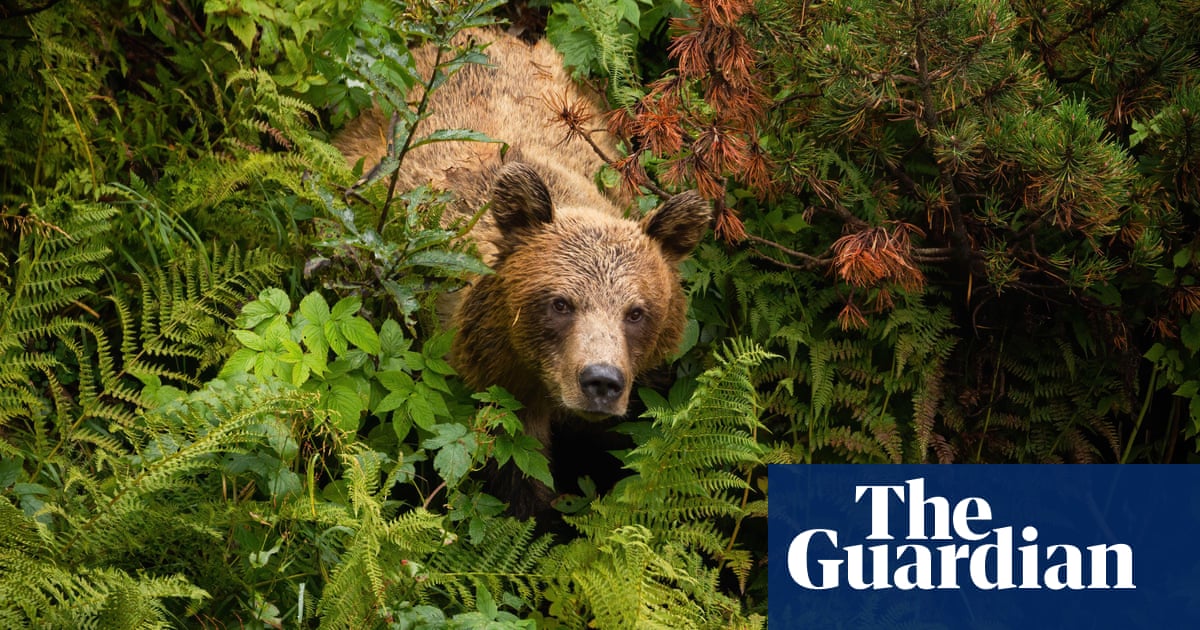Romania's Brown Bear Population Surges, Prompting Calls for New Management Policies

Recent research conducted by Romania's forestry research institute has revealed that the country could be home to as many as 13,000 brown bears, a figure that is nearly double the previous estimate. This significant increase in the bear population has raised concerns among officials, who are now promising to implement new laws aimed at helping communities manage what they term crisis bear situations.
The comprehensive study focused on 25 counties in the picturesque Carpathian mountains, and it is notable for being the first of its kind to utilize DNA samples gathered from various sources, including faeces and hair. In stark contrast, earlier estimates were primarily based on sightings and footprint observations, which suggested that the bear population was less than 8,000.
Over the past two decades, the Romanian environment ministry has reported that brown bears have caused the deaths of 26 individuals and inflicted severe injuries on 274 others. The most recent tragic incident involved a 19-year-old hiker who was mauled to death while traversing a popular trail in the Carpathians last July, underscoring the growing threat bears pose to human safety.
In response to this alarming trend, the Romanian government increased its authorized cull of brown bears last year to 481, despite the fact that these animals are considered a protected species within the European Union. This decision came after the ministry logged over 7,500 emergency calls in 2023 reporting bear sightingsmore than double the number from the previous year.
Members of Parliament have argued that the rising bear population constitutes overpopulation, which they claim is directly linked to the uptick in bear attacks. However, environmental advocacy groups have fiercely contested this assertion, arguing that the focus should instead shift towards preventative measures. These measures could include strategies to keep bears away from populated areas and targeting specific problem bears that exhibit aggressive behavior.
Recently, Germanys foreign ministry updated its travel advisories for Romania, cautioning that bears have increasingly been spotted in residential neighborhoods and near roads. This situation has resulted in dangerous encounters with humans, prompting officials to encourage travelers to heed local warnings and take precautions.
The study, which analyzed around 24,000 samples collected over three years starting in 2022, concluded that the population of brown bears in Romania ranges between 10,419 and 12,770 individuals, making it the largest brown bear population in Europe, outside of Russia.
However, the World Wildlife Fund (WWF) Romania has raised questions about the methodology employed in the recent study, suggesting that genetic analyses of this nature are typically conducted over much shorter time frames. In response, the forestry institute has maintained that it considers its survey results to be 95% accurate.
Romanian Environment Minister Mircea Fechet has expressed intentions to lobby the European Commission to reconsider the bear's protected status under EU law, which currently permits the killing of bears only in exceptional situations as a last resort. We have to intervene, Fechet stated in an interview with local media. The specialists say the optimal bear population is around 4,000.
To further tackle the issue, Fechet has proposed a new law that would empower local officials to circumvent the existing gradual intervention protocol. Under current regulations, mayors are required to attempt non-lethal methods firstsuch as scaring bears away or capturing them for relocationbefore resorting to lethal measures. The new legislation would allow for the direct culling of bears if deemed necessary.
Fechet acknowledged that current approaches have proven ineffective, stating, I hope my proposal, which is currently under public consultation, will put an end to these tragedies. Human life comes first.
In a related development, Slovakia recently authorized the culling of 350 brown bearsapproximately a quarter of its estimated population of 1,300following the death of a 59-year-old man who was mauled. Two additional fatalities were reported last year, resulting from bear attacks or chases.
Slovakias populist Prime Minister Robert Fico articulated the urgency of the situation, asserting, Slovaks cannot live in a country where people are afraid to go into the forest, and where humans become food for bears.





























